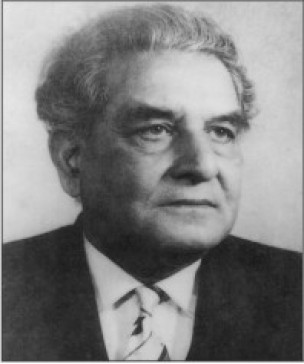S.N. Das Gupta

| Name | S.N. Das Gupta |
| Designation | President |
| Complete postal Address with city code | Indian Phytopathological Society |
| Email IDs | xyz@gmail.com |
| Mobile No. | 123456789 |
Brief Biodata
In the sudden demise of Professor Dr. Sachindra Nath Dasgupta on 11th September, 1990 the country has lost a very eminent and distinguished plant pathologist, teacher, researcher, educationist and administrator. Prof. Dasgupta was born at Jalpaiguri on the 4th November, 1902. He completed his early education at Jalpaiguri Zilla School, Bangabasi College and Presidency College (Calcutta). He passed M.Sc. (Botany) with first class first from the University College of Sciences, Calcutta and received the University Gold Medal in 1925. For Ph.D. and D.Sc. degrees, he worked at the Imperial College of Science and Technology, London University. Prof. Dasgupta returned to India in 1934 and joined the Lucknow University as Reader in Botany. He was elevated as Professor and Head of the Department of Botany in 1949, and Dean, Faculty of Science in 1954. In 1960 he joined the Kalyani University as its first Vice- Chancellor from where he retired in 1968. Professor Dasgupta also served in the UNESCO and Public Service Commission, West Bengal for short periods.
At Lucknow University, Dr. Dasgupta
established one of the finest schools of Mycology and Plant Pathology, which
attracted students not only from various parts of India but from other
countries as well. His early work on 'Saltation of Fungi' (published
as a booklet in 1936) earned him great repute and his work was cited in
international books and journals. Among the national problems he concentrated
on diseases of complex etiology specially tip necrosis of mango. His team of
workers demonstrated not only the cause but also developed economic means to
control the disease (spraying borax). His work on aquatic fungi won the
appreciation of world authority like Prof. Sparrow. He is one of the few
mycologists who have contributed to Medical Mycology and his review in the
Mycopathologia et Mycologia Applicata (in 1960) still
serves as the most important document for planning research projects. He also
laid a firm foundation to the establishment of researches on host-pathogen
interactions, leather mycology, paper pulp mycology, predacious fungi, etc. At
a time (1958-60) when scientists were groping in the dark and trying to relate
virulence of a pathogen with a particular enzyme/toxin, he declared that it was
the sum total of metabolic pattern that should be basically considered for the
determination of aggressiveness of a pathogen. Space does not permit even to
comment on all the important contributions made by this celebrated plant
pathologist/botanist. His dynamism and flare for critical research is well
exhibited in the diverse aspects on which he published and guided research. The
generation of scientists trained under him occupy responsible positions in
Universities and Research Institutions not only in India but other countries as
well. For his rich contributions and analytical approach he was requested by
the Indian Botanical Society to write the History of Plant Pathology in India,
Burma and Ceylon which was published in the form of a book in 1958 and which
still serves as an important reference for any plant pathologist. He delivered
the 1st Jeerasannidhi Award Lecture of the Indian Phytopathological Society in
1982. He was also one of the oldest scientists to publish original research
papers. His MSS are still in press in the Indian
Phytopathology and Journal of Indian Botanical Society. He worked on the
typewriter even under failing eyesight and poor health, only to fulfil the
mission of his life. This clearly proves his enormous interest in the area of
his expertise-mycology and plant pathology. When heexpired, suddenly and
peacefully, he was in the process of writing memoirs of greatmen he had met
during his life time, a final essay on mango necrosis and a book on non-
parasitic diseases of plants in India.